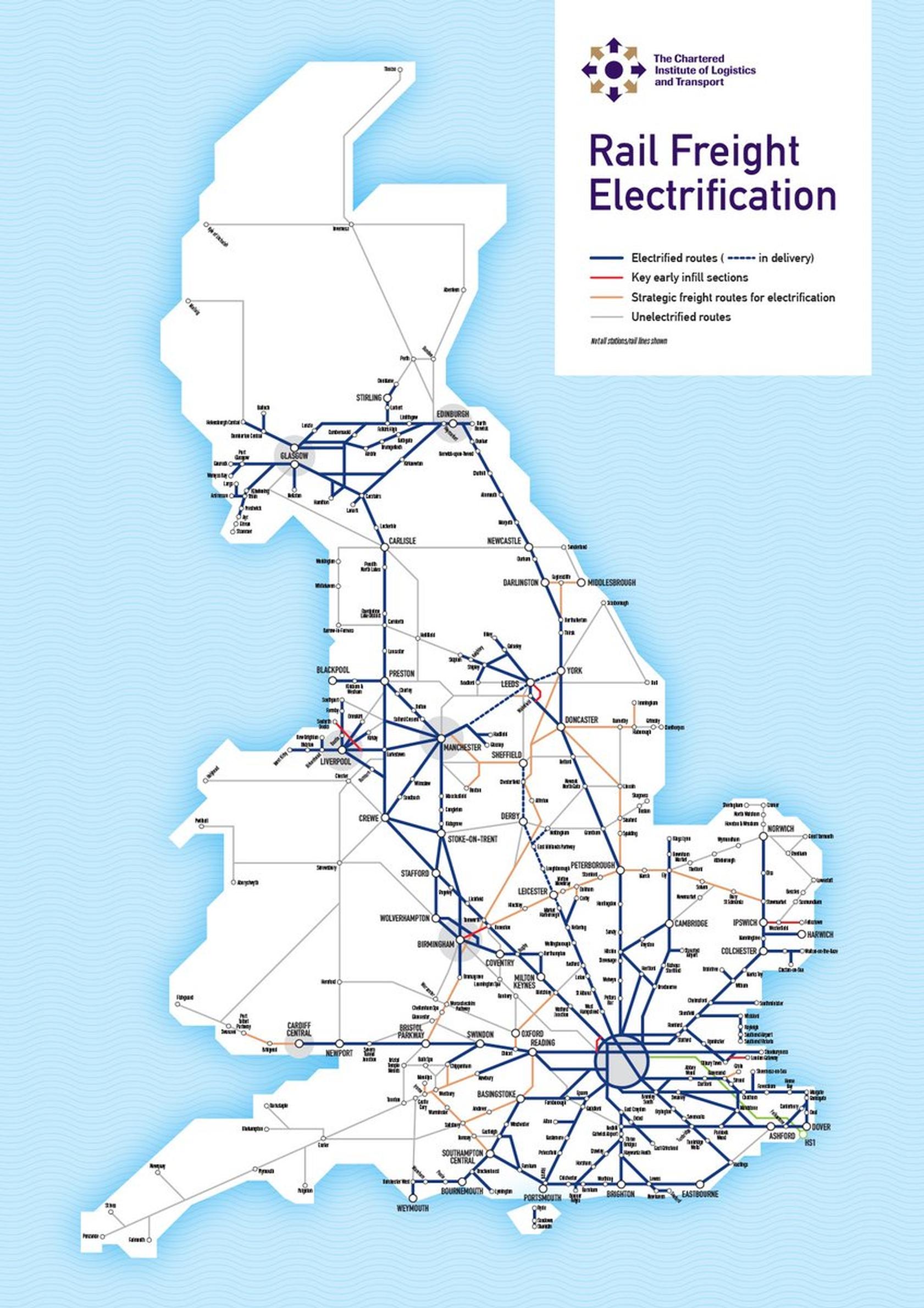

Up to 95% of rail freight operations could be electrified by the mid-2040s, says the Chartered Institute of Logistics and Transport.
CILT(UK) has published its electrification strategy research which sets out what it calls a “significant opportunity of electrification” across the UK’s rail network.
CILT has released a detailed map and strategy which demonstrates and details the opportunity in the UK to electrify 95% of rail freight operations by the mid-2040s.
The research reveals that only 800 miles of additional electrification is needed in the UK to enable 95% of rail freight to be electrically hauled.
The initial 60 miles of infill electrification is estimated to cost around £50m per annum over two years, claimed to be less than the cost of one road scheme. CILT says this represent a ‘no regrets’ way of decarbonising key parts of the UK logistics system.
Currently, just 10% of British freight trains are hauled by electric locomotives and the UK lags behind its European counterparts when it comes to rail freight electrification.
CILT suggests an electrification programme of 40 route miles per annum for 20 years, at a cost of £100m per annum, is required to deliver this significant opportunity for the UK to meet its decarbonation and net zero goals.
The institute says that while decarbonising technology for other modes of transport is still emerging, and therefore sometimes challenging to introduce, electrified rail transport is a fully mature, proven green technology which has been in use for more than 60 years. CILT sees this opportunity as ‘low-hanging fruit’ when it comes to decarbonisation and reducing emissions from transport operations.
Julian Worth, chair of CILT’s Rail Freight Forum and lead author of the strategy said: “The CILT electrification strategy would allow circa 95% of UK freight trains to be hauled by electric locomotives by the mid-2040s, saving considerable amounts of carbon every year. The strategy benefits passengers as well as freight customers. Almost all the routes involved carry passenger trains and the strategy would enable life-expired diesel trains to be replaced by modern electric units.
Based on detailed analysis of data on rail freight movements across the UK, the routes proposed for electrification lead from main container ports to inland distribution centres, which are key supply chain hubs, and from major quarries to urban areas that require large quantities of construction materials. Also included are routes serving other key rail freight customers such as the steel industry.
The CILT research also specifies three priority areas in its electrification strategy:
Sharon Kindleysides, chief executive at CILT said: “CILT is committed to helping policy makers, industry and professionals play their part in the route to net zero. Our policy groups have worked tirelessly on this research to demonstrate the opportunity electrifying our rail freight sector presents. The CILT electrification strategy also strongly supports other policy imperatives, notably levelling up and union connectivity and sees rail freight electrification as a key part of the route to net zero.”
TransportXtra is part of Landor LINKS
© 2026 TransportXtra | Landor LINKS Ltd | All Rights Reserved
Subscriptions, Magazines & Online Access Enquires
[Frequently Asked Questions]
Email: subs.ltt@landor.co.uk | Tel: +44 (0) 20 7091 7959
Shop & Accounts Enquires
Email: accounts@landor.co.uk | Tel: +44 (0) 20 7091 7855
Advertising Sales & Recruitment Enquires
Email: daniel@landor.co.uk | Tel: +44 (0) 20 7091 7861
Events & Conference Enquires
Email: conferences@landor.co.uk | Tel: +44 (0) 20 7091 7865
Press Releases & Editorial Enquires
Email: info@transportxtra.com | Tel: +44 (0) 20 7091 7875
Privacy Policy | Terms and Conditions | Advertise
Web design london by Brainiac Media 2020